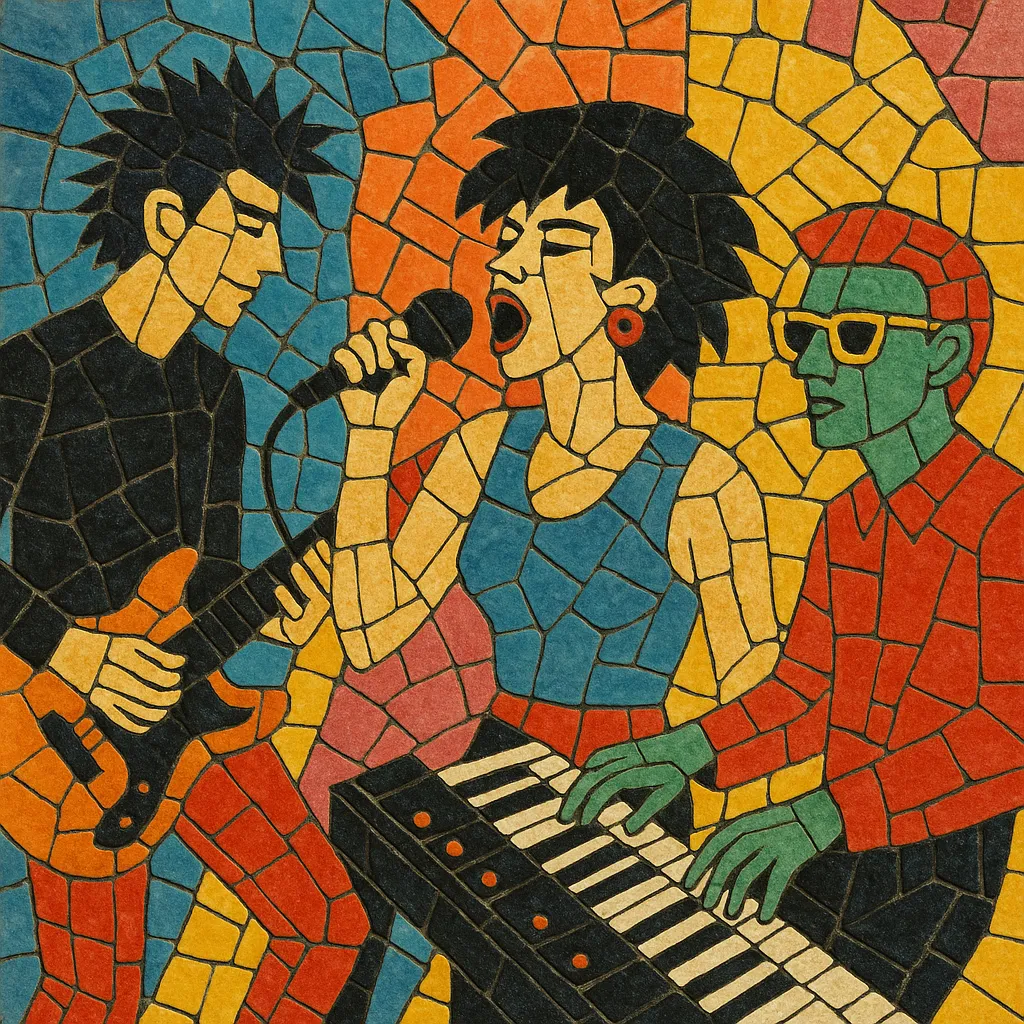Movida madrileña is a late-1970s to mid-1980s cultural and musical movement centered in Madrid that celebrated freedom, experimentation, and urban nightlife in the wake of Spain’s transition to democracy.
It blends punk’s DIY spirit with new wave, post-punk, synth-pop, and power pop, favoring catchy choruses, angular guitars, prominent bass lines, and bright analog synthesizers.
Visually and lyrically it is playful, irreverent, and hedonistic—embracing fashion, film, photography, fanzines, and club culture—while often deploying irony to comment on modernity, identity, and the city.
Key venues (notably Rock-Ola), indie labels (DRO, GASA, Tres Cipreses), and radio/TV programs (Radio 3’s shows, La Edad de Oro, La bola de cristal) amplified the sound and attitude across Spain.
After the death of Francisco Franco (1975) and during Spain’s democratic transition, Madrid incubated a new countercultural energy. Proto-movida bands like Kaka de Luxe emerged, connecting punk’s DIY ethos to a distinctly Spanish urban sensibility. Informal networks of fanzines, art collectives, and small labels began to coalesce.
Municipal openness (symbolized by Mayor Enrique Tierno Galván), a growing club circuit (Rock-Ola, El Sol, La Vía Láctea, El Penta), and supportive media (Radio 3’s “Diario Pop,” “Esto no es Hawai,” Paloma Chamorro’s TVE show “La Edad de Oro,” and Alaska’s “La bola de cristal”) catalyzed the scene. Indie labels like DRO, GASA, and Tres Cipreses enabled rapid releases. Stylistically, acts ranged from pop/rock (Nacha Pop, Los Secretos) to techno-pop/synth (Mecano, Aviador Dro) and darker post-punk/goth-leaning corners (Parálisis Permanente, Décima Víctima), with new wave and power-pop hooks at the core.
The movida was as much visual and social as musical: fashion designers, photographers, comic artists, and filmmakers (notably Pedro Almodóvar) cross-pollinated with bands. Irony, playful provocation, and urban hedonism defined its tone, while Spanish-language lyrics reclaimed modern pop idioms for local life.
As some groups crossed into mainstream success, the underground edge softened. Venue closures, drug-related issues, and media fatigue contributed to the scene’s waning by the late 1980s. Nevertheless, its spirit and aesthetics seeded Spain’s modern pop/rock identity.
Movida madrileña normalized Spanish-language new wave and synth-pop, professionalized indie infrastructures, and inspired later Spanish pop/rock and indie generations. Its songs, imagery, and TV appearances remain iconic touchstones of the “Edad de Oro” of Spanish pop.
Aim for energetic, hook-driven songs that balance punk/new wave directness with synth-pop color. Emphasize Spanish-language lyrics with urban imagery, irony, and playful provocation.


